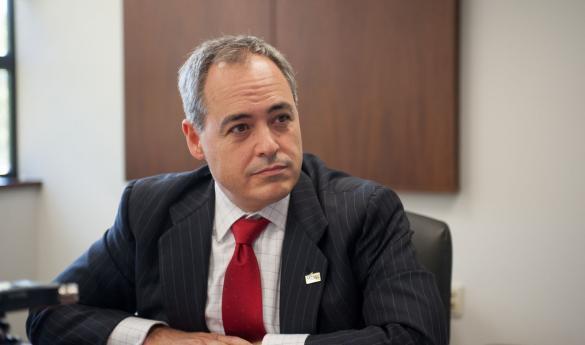Cabrera releases working draft of university vision
On Feb. 5, George Mason University President Ángel Cabrera released a working draft of the Mason Vision.
The Mason Vision is intended to provide a basis for the administration to make decisions regarding the university in the future. The ideas in the vision help to direct the university in what it refers to as “strategic planning.”
“Throughout the fall 2012 semester, working groups, which included broad representation from the university community, gathered input from a variety of sources, including external and internal reports, and from the Mason community at large,” read the document. “The working groups focused on issues related to: Mission, Values, and the Mason Graduate; Student Value and Affordability; Research; Program Innovation and Growth; Online and Executive Education; Regional Strategy; Global Strategy; and Funding and Resources.”
Over 3,000 individuals have provided some form of input into the 17-page document.
Cabrera opens the vision by explaining the current problems facing higher education. According to Cabrera, higher tuition costs and reductions in state funding are putting strains on families that are questioning the investment of higher education.
Cabrera writes that while there are challenges to higher education, there are also opportunities.
“While the environment is challenging, it highlights our institutional strengths,” wrote Cabrera. “George Mason is already a low-cost, low-tuition institution when compared with other Virginia universities or similar public and private universities nationally. And it is also a high-value institution.”
Cabrera believes Mason’s location in northern Virginia, near the nation’s capital, will help support several of the goals explained in the vision.
The vision covers six main ideas used to guide the university: the motto, the Mason idea, the mission, the values, the graduates and the commitments.
In the draft, Cabrera writes that the university’s commitments are innovative learning, research of consequence, economic and cultural engineering, engagement with the world, sound investment, enriching work environment and foundation for the future.
“Commitments are the ideas that will drive our attention, innovation and investments over the next decade. These commitments inform our next steps and lay the foundation for the important work ahead—identifying important strategies to advance the work of our academic units, organizing and identifying priorities for the next comprehensive campaign, investing for a sound future and securing our partnerships with public and private organizations.”
Throughout the document, Cabrera also provides several examples of how these commitments can be fulfilled.
Incorporating innovative learning could require incorporating advanced technology into curriculums. In order to be an economic and cultural engine, Mason could better communicate and coordinate with the local political and economic officials. To influence engagement with the world, the university may provide a means of increasing student opportunities for study abroad. Cabrera also emphasizes being a sound investment, which for him could be actions such as closing the cost-per-student funding gap. Finally, he also refers to the potential of increasing faculty salaries in order to create an enriching work environment.
Students and faculty are asked to give their input and comments on the draft. The university asks that comments be sent via email to vision@gmu.edu or to attend one of the four upcoming town hall meetings:
-
Fairfax: Feb. 18, 8:30–9:30 a.m., Dewberry North, Johnson Center
-
Arlington: Feb. 19, 10–11 a.m., Founders Hall, Room 113
-
Fairfax: Feb. 22, 10:30–11:30 a.m., Dewberry North, Johnson Center
- Prince William: Feb. 26, 2–3 p.m., Verizon Auditorium
The final version of the Mason Vision will be presented to the Board of Visitors at their meeting on March 20.

